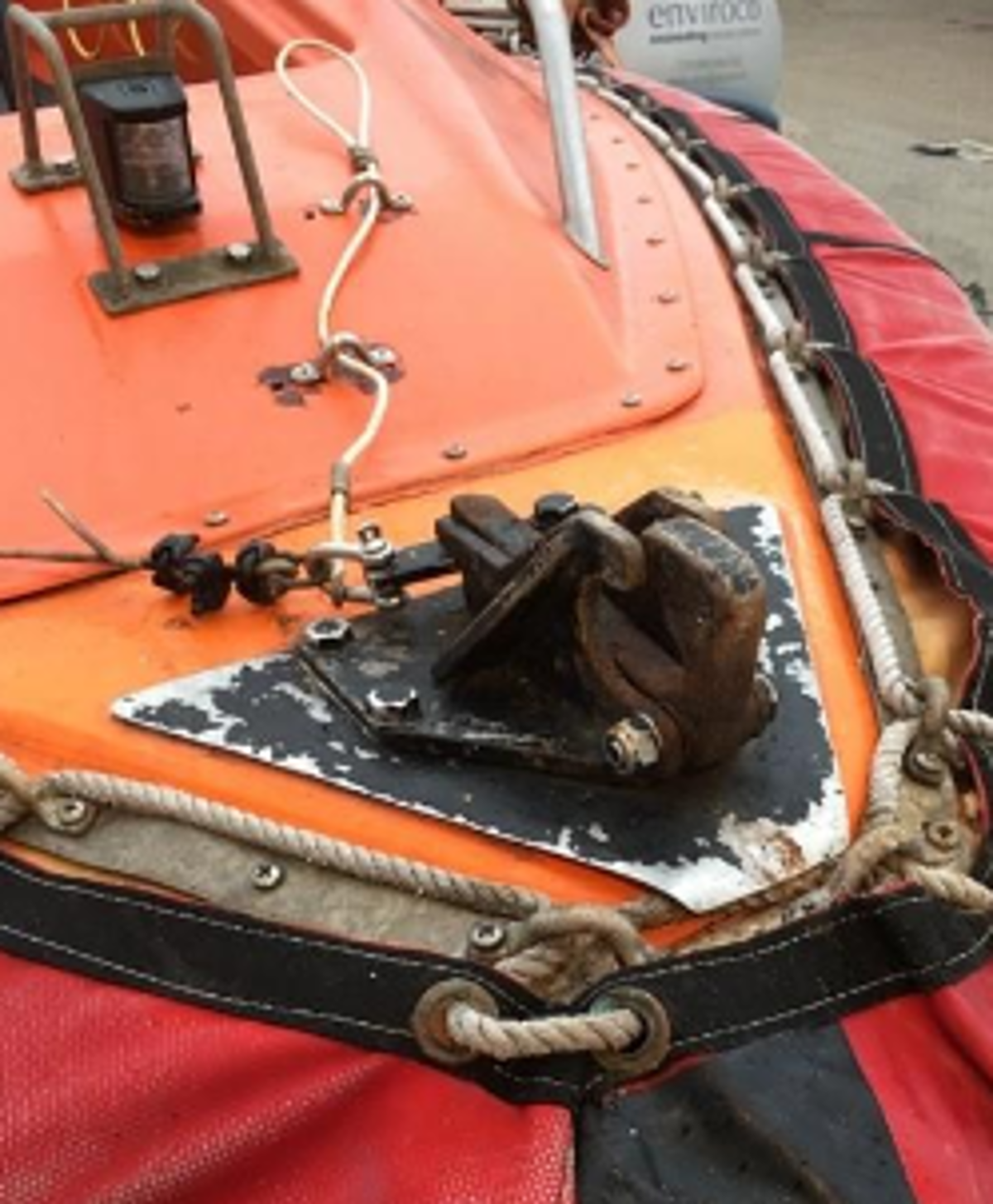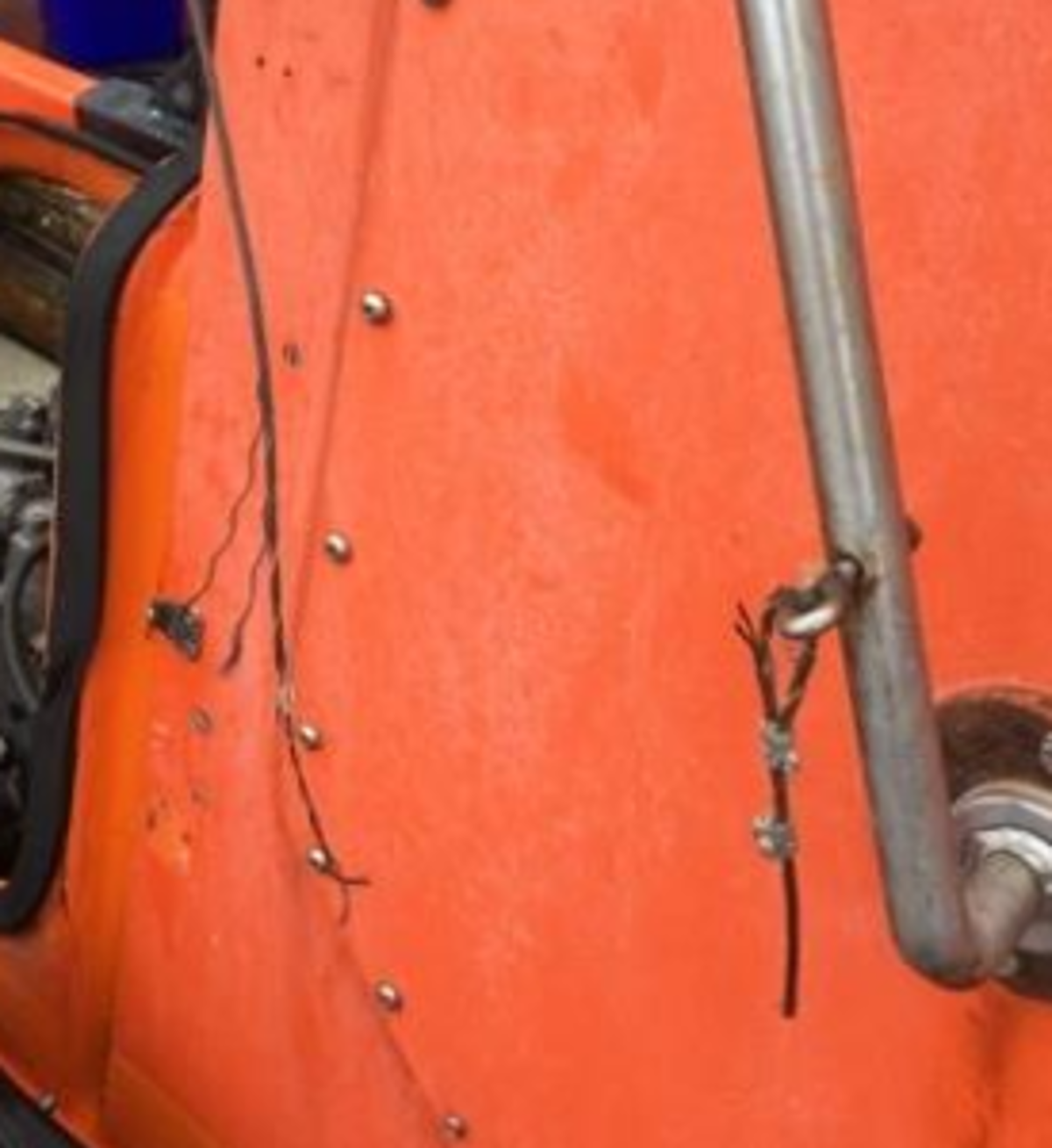Marine Safety Forum: Two incidents relating to fast rescue craft
- Safety Flash
- Published on 17 March 2020
- Generated on 25 December 2025
- IMCA SF 10/20
- 3 minute read
Jump to:
The Marine Safety Forum (MSF) has published two recent Safety Alerts relating to Fast Rescue Craft (FRCs). In the first, an FRC capsized during launch. The second covers launching conditions for Fast Rescue Craft.
Incident 1: FRC capsizes during launch
During the launch of a Fast Rescue Craft (FRC) for validation trials, the cable that releases the hook for the fall wire parted, resulting in the coxswain being unable to release the hook.
The bowman mistook a gesture from the coxswain and released the bow line.
This caused the FRC to turn 90 degrees to the vessel and quickly capsize, resulting in the three crew members falling into the sea.
The Safety Alert notes that they were all recovered with no significant injuries.
The FRC was righted with the self-righting bag and was recovered, having sustained significant damage. See here for MSF Safety Alert.


What actions were taken?
The following actions were put in place by the vessel owner:
- All vessels are to hold a time out for safety with FRC/DC crews on launch and recovery, the focus of which is the function/release of the bow line and communications between crews. Also, vessels are to review their launch/recovery procedures and risk assessment highlighting critical points including the need for visual verification of release.
- Refresher training to be given to all boat crews highlighting the need for clear communication regarding all aspects of FRC operations, particularly during launch with regards to releasing the bow line.
- Add checks to remote release mechanisms to daily/weekly routines checking for kinks, corrosion and broken strands.
- Crews to be reminded that regardless of time pressure, launches and recoveries should be conducted in a systematic way that strictly adheres to procedure with clear and concise communications.
Incident 2: Launching conditions for fast rescue craft
A platform supply vessel recently experienced an incident whereby the emergency launch equipment failed following a successful launch and recovery of the vessel’s Fast Rescue Craft (FRC).
Having already recovered the FRC back to its stowed position, the emergency launch was to be tested next. When the emergency launch was activated the davit should have swung the FRC over the side and then lowered it to sea level.
However, the davit remained in place and immediately lowered (quickly) the FRC to the deck directly below causing slight damage to the FRC’s hull.
What went wrong?
Upon investigation, it was found that the arm on the emergency lowering valve which activates the winch sequence was stuck in the lowered position.
This meant that when the emergency lowering system was activated the system treated the davit as being swung over the side, and it proceeded to the FRC on to the deck.
Following the investigation, it was also found that the jobs in the planned maintenance system relating to the valve had not been completed in full, due to a lack of understanding of the task description.
Actions
Following recovery of the FRC:
- The valve was overhauled and replaced and tested for full functionality.
- The procedure for testing the emergency lowering was amended to ensure that the valve is checked prior to activation.
- Planned maintenance system was reviewed to ensure clarity.
- The MSF recommends that all companies review their own procedures to assess potential for similar incidents along with appropriate control measures.
See the full MSF Safety Alert here.
Related Safety Flashes
-
IMCA SF 03/18
31 January 2018
-
-
IMCA SF 10/17
12 May 2017
-
IMCA Safety Flashes summarise key safety matters and incidents, allowing lessons to be more easily learnt for the benefit of the entire offshore industry.
The effectiveness of the IMCA Safety Flash system depends on the industry sharing information and so avoiding repeat incidents. Incidents are classified according to IOGP's Life Saving Rules.
All information is anonymised or sanitised, as appropriate, and warnings for graphic content included where possible.
IMCA makes every effort to ensure both the accuracy and reliability of the information shared, but is not be liable for any guidance and/or recommendation and/or statement herein contained.
The information contained in this document does not fulfil or replace any individual's or Member's legal, regulatory or other duties or obligations in respect of their operations. Individuals and Members remain solely responsible for the safe, lawful and proper conduct of their operations.
Share your safety incidents with IMCA online. Sign-up to receive Safety Flashes straight to your email.